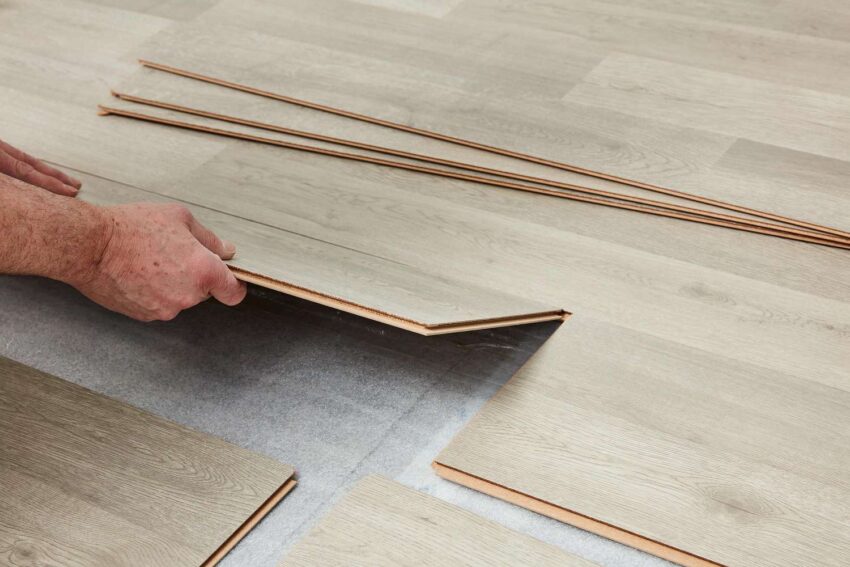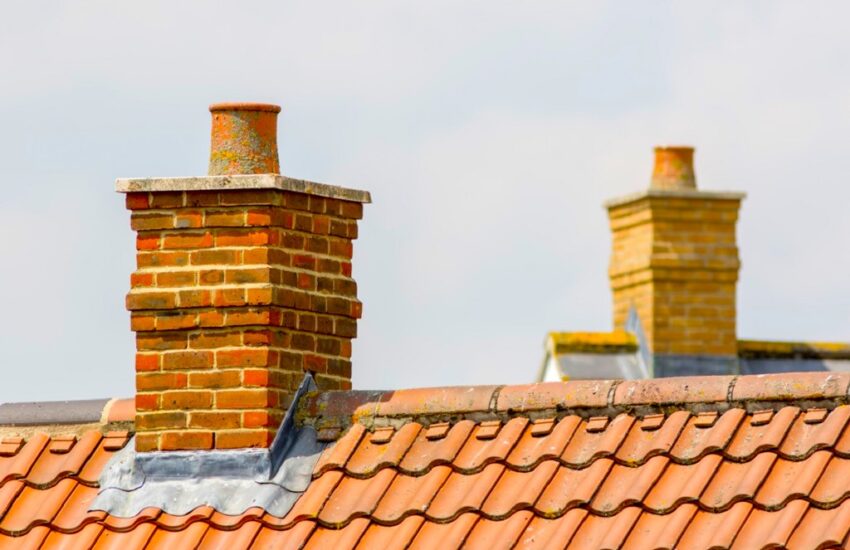Laminate flooring has become very popular in the last few decades, and for good reason. It is an affordable flooring option that offers a beautiful surface while still being durable and easy to maintain. The installation process is also straightforward, which makes it ideal for newbies to laminate flooring installation.
However, laminate flooring installation is not as simple as it seems. There are many different factors to consider, from the type of laminate flooring you want to install to how much space you have in your home. This blog will cover all of those factors, along with tips and tricks to ensure you get the job done right – every single time.
What Is Professional Laminate Flooring Installation?

The underlayment is a layer of material that is placed under the laminate flooring planks or tiles to slightly level them, cushion the laminate planks, reduce sound transmission, and improve the floor’s R-value. Underlayment materials are typically made of rubber, cork, rubber cork, felt, or foam and are usually 2-3 mm thick. They also serve as a protective barrier between the subfloor and the laminate flooring, protecting it from mold growth and moisture.
Underlayment is often overlooked by homeowners but plays an important role in creating optimal laminate flooring conditions. When purchasing laminate flooring, consider selecting underlayment that offers optimum insulation and protection while providing a comfortable surface to walk on. This will help to ensure a safe and functional flooring installation experience for you and your family.
The Benefits of Professional Laminate Flooring Installation
A professional laminate flooring installation is a relatively cheap and quick way to improve the appearance of your flooring. A professional laminate flooring installer will properly fit the flooring to the subfloor, preventing any damage to the planks. Underlay provides insulation, sound reduction, and moisture absorption, increasing the longevity of the flooring. While underlayment is optional with laminate flooring, it’s a good idea to use underlayment on hardwood or concrete subfloors to provide additional insulation and moisture barrier. In addition to providing extra insulation and soundproofing, underlayment can help protect the laminate from scratches and minor scuffs.
Different types of underlay are available depending on the environment the flooring will be installed in. If you’re installing laminate flooring indoors, underlayment made of insulation material or foam is recommended. If you’re installing laminate flooring outdoors on concrete or hard subfloors, underlayment made of moisture-resistant material is best. Also, make sure that your underlayment is long enough to cover all of the laminate flooring planks completely. Lastly, when using underlayment made of carpet or fabric on indoor floors, be aware of any allergies or sensitivities to materials used in its manufacture.
By choosing a professional laminate installation service over DIY, you can save time, money, and resources while ensuring that your flooring installation is done correctly and safely.
Preparing Your Home for Installation
When it comes to laminate flooring, it’s important to plan and prepare your home for installation. Consider the location of the installation in order to determine the best type of underlayment for your particular needs. Invest in a good laminate underlayment to help your floor last longer and look better. Different flooring types require different types of underlayment; foam with a vapor barrier is ideal for laminate while cork with stain-resisting properties is ideal for vinyl. Make sure to check the subfloor for imperfections to ensure a successful installation. Also, avoid using underlayment that is too thin or too thick, as this can cause issues during installation. Finally, make sure to follow any specific instructions provided by the flooring manufacturer regarding underlayment types and thicknesses.
How to Select the Right Laminate Flooring
When it comes to laminate flooring, the underlayment is one of the most important components. This is because it helps provide protection from moisture and noise. Cork and foam are the most popular underlayment options for laminate flooring due to their sound absorption, thickness, and moisture resistance. Both underlayments provide good insulation and can help increase the lifespan of laminate flooring. It’s important to choose a flooring type that best suits your needs and lifestyle. This includes factors such as durability, appearance, and cost. In addition to the underlayment, you should also consider the laminate’s R-value when selecting an underlayment. This refers to how well it insulates the flooring. As you can see, a thorough review of laminate flooring underlayment is essential to getting a durable floor with optimal insulation.
How to Install Laminate Flooring like a Pro
When it comes to installing laminate flooring, it’s vital to plan ahead and take the safety precautions required to ensure a successful installation. Choose laminate flooring that is suitable for your space and underlayment material based on your needs and specifications.
Make sure to use underlayment that is water-proof, durable, and slip-resistant. This will help protect the flooring from damage and make it easier to clean. Also, prepare the floor by grinding high points and smoothing the floor with a self-leveling compound. This will help reduce any imperfections and provide a smooth surface for the laminate flooring to adhere to.
Consider the environment where you are installing the flooring to determine the type of underlayment best for the type of laminate flooring you are using. For example, vinyl plank flooring is an alternative to laminate flooring in spaces that require moisture management.
Tips for a Perfect Finish
Whether you’re installing laminate flooring or vinyl flooring, there are a few tips to follow for a perfect finish. Firstly, it’s essential to ensure the subfloor is even and smooth for the best finish. This can be done by investing in underlayment that is at least 6-7mm thick to smooth out any imperfections in the subfloor. Also, consider using masonite as the underlayment of choice for upper floors as it is lighter and easier to work with. These underlayments provide noise reduction benefits, which can help reduce noise from footsteps and other activities in the flooring area.
When installing laminate flooring, use carpentry hand tools and power tools for fine-finish carpentry and fitting skirting boards. This will allow you to achieve a professional-looking finish without having to spend too much time on the job. Additionally, take into consideration the noise reduction benefits of rubber underlayments such as cork and rubberized underlayments when installing laminate flooring in heavy-use areas such as kitchens and living rooms.
Common Mistakes to Avoid When Installing Laminate Flooring
Installing laminate flooring is a great way to add style and value to your home, but there are a few things to keep in mind to ensure a successful installation. For example, not taking into account the environment can lead to poor results, as different types of underlayment can affect the longevity of laminate flooring. Also, it’s vital to choose the right type of underlayment for your flooring, as different underlayment materials help with moisture control and comfort levels.
When using moisture-wicking underlayment in humid climates, it’s important to use an uncoupling membrane underlayment to prevent tiles from expanding and contracting too much, which can cause damage over time. Additionally, it’s important to install a cement board underlayment on floors to provide good support and protection against water damage. By taking these extra steps during the installation process, you can ensure that laminate flooring lasts long and looks beautiful for years to come.
Conclusion
Laminate flooring is extremely popular because of its versatility, low price, and long-lasting benefits. It can be installed easily, and provides a beautiful wood-inspired flooring option that’s durable and easy to maintain. However, if you’re new to laminate flooring installation or just want to learn more about it, this blog covers the most commonly asked questions and tells you how to get the best laminate flooring installation results. Comment below and share your thoughts on laminate flooring installation.








